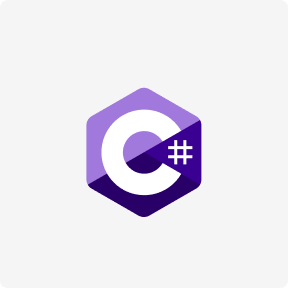Yetunde Salami is a seasoned technical writer with expertise in the hosting industry. With 8 years of experience in the field, she has a deep understanding of complex technical concepts and the ability to communicate them clearly and concisely to a wide range of audiences. At Verpex Hosting, she is responsible for writing blog posts, knowledgebase articles, and other resources that help customers understand and use the company’s products and services. When she is not writing, Yetunde is an avid reader of romance novels and enjoys fine dining. Databases form the backbone of various applications, from web and mobile apps to enterprise systems.

For example, like SQL, MQL allows you to reference data from multiple tables, transform and aggregate that data, and filter for the specific results you need. Unlike SQL, MQL works in a way that is idiomatic for each programming language. MongoDB supports distributed transactions, which means multi-document transactions and sharded clusters can be easily performed on replica sets. From the programmer perspective, transactions in MongoDB feel just like transactions developers are already familiar with in PostgreSQL. One or more fields may be written in a single operation, including updates to multiple subdocuments and elements of an array.
Both databases are awesome, but what is your need?
PostgreSQL is an ideal choice when your application relies heavily on structured data with complex relationships. It excels in managing relational data and supports SQL, making it suitable for applications with well-defined schemas. PostgreSQL is an object-relational database management system that uses tables, rows, and columns to store data.
The index size varies between the two database systems even for the same attribute that performed. The two systems store data differently and the concept of “index” is different too. As an example the size of the index on attribute “ship_id” in MongoDB is about 6 GB while in PostgreSQL the size is 3,1 GB.
Overview of MongoDB and PostgreSQL
Data migration may also generate overhead; however, this is standard irrespective of the database you have implemented in your system. Hence anyone can use its features and make modifications to the code with ease when necessary. MongoDB also makes it easy to collaborate between developers or teams, therefore, there’s no need for intermediation or complicated communication between teams. Low-code ETL with 220+ data transformations to prepare your data for insights and reporting.
MongoDB vs. PostgreSQL vs. ScyllaDB: Tractian’s Experience – The New Stack
MongoDB vs. PostgreSQL vs. ScyllaDB: Tractian’s Experience.
Posted: Wed, 31 May 2023 07:00:00 GMT [source]
The performance is measured in terms of response time in a 5-node cluster and the results show that PostgreSQL outperforms MongoDB in almost all cases. Also, the average response time is enormously reduced with the use of indexes in the case of MongoDB with a significantly smaller, positive impact in PostgreSQL. Finally, the dataset size in the system db is 4x smaller in PostgreSQL. Query Q7i returns the haversine distance while Q8i returns the average speed for different amount of vessels and timestamps. To make it more comprehensible, in Q7i second bar for example, the query finds the haversine distance of each vessel belongs to a set of 100 vessels for 100 different time intervals and sum the results of each vessel. The average response time is reduced in case of PostgreSQL for both queries and as the sample grows the difference begins to become more noticeable.
What is PostgreSQL?
PostgreSQL, on the other hand, supports traditional SQL transactions, which are more familiar to developers. Both databases offer security features such as authentication, role-based access control, encryption, and SSL/TLS support to protect data from unauthorized access and ensure data privacy. MongoDB’s ease of use and quick development may provide advantages for small projects or startups with evolving data structures and flexible requirements. mongodb postgresql MongoDB has improved its support for ACID transactions in recent versions, but it is important to note that its transactional capabilities are not as mature as those of PostgreSQL. For applications heavily reliant on complex transactions, PostgreSQL may be a more suitable choice. The Automatic Identification System (AIS) is a system that vessels use in order to transmit their position and their navigational status in pre-defined time slots.

As it’s a relational database management system, PostgreSQL can guarantee that transactions follow each property of ACID. Additionally, as there’s no support for joins, MongoDB databases are oversupplied with data — sometimes duplicate — hence heavily burdening the memory. MySQL, with its long-standing presence in the market, boasts a mature and robust user interface. It offers multiple options for managing and interacting with databases, including the popular MySQL Workbench and command-line tools like MySQL Shell.
PostgreSQL
On the other hand, in PostgreSQL the data ingested in database as CSV, with the addition of the_geom column that contains the POINT geometries of each latitude and longitude. For data ingestion we used the mongoimport tool to import data into MongoDB database. The total size the dataset occupied in the collection in MongoDB is 116 GB and each record has a size of about 275 bytes. Q7i returns the haversine distances of vessels by calculating continuous distances of pairs of points and by summing these distances for every vessel passed in the query.
MySQL database performance-optimization options are very limited, and many Indexes are also not supported. Without full SQL compliance, writing efficient and well-performing SQL queries can be a challenge. Tablespaces for spreading data across multiple disks are a challenge, since tablespaces are only supported in InnoDB and cannot accommodate table partitions. Simple queries to hit tables can be made to complete faster by creating B-TREE Indexes.
Partitioning
Document databases can do JOINs, but they are done differently from multi-page SQL statements that are sometimes required and often automatically generated by BI tools. That said, MongoDB does have a SQL connector that allows SQL access, mostly from BI tools. Furthermore, MongoDB Live Migration Service makes it easier to migrate from self-managed MongoDB databases to the fully-managed cloud database platform, MongoDB Atlas. PostgreSQL can be run as an installed, self-managed version, or as a database-as-a-service on all of the leading cloud providers. Each of those implementations work the way the cloud provider that created them wants them to work. To get support for PostgreSQL, you have to use a cloud version or go to third parties offering specialized services.

In particular, the work conducted, set to identify the most efficient data store system in terms of response times, comparing two of the most representative of the two categories (NoSQL and relational), i.e. Furthermore, the average response time is radically reduced with the use of indexes, especially in the case of MongoDB. There are challenges in managing and querying the massive scale of spatial data such as the high computation complexity of spatial queries and the handling of the big data nature of them. There is a need for queries that their response time is in a reasonable time and a scalable architecture such as cluster or cloud environment. Hadoop fits well in that case as it can handle large scale data and support big data computations and analytics through MapReduce and some declarative query interfaces such as Hive [17], Pig [18] and Scope [19].
Performance Testing PostgreSQL® on Azure NetApp Files
Also, our future plans include the extension of our system architecture to what it is called ”Shared Cluster”. The query finds the coordinates of vessels for different amount of timestamps inside the intersection of three different groups of polygons. Only in this case, the average response time is smaller in case of MongoDB and in some cases reduced at half comparing to PostgreSQL. For our point of view, the reason might be that intersection in MongoDB which is achieved by an aggregation of two match operations is more efficient than in PostgreSQL.
- MongoDB uses MQL, which can be used to work with documents in MongoDB and take out data while delivering the flexibility and power that SQL does.
- This comparison covers a wide range of aspects, including features, use cases, performance, extensibility, security, and cost, providing readers with a comprehensive understanding to aid their decision-making process.
- The part of this feature that developers love is the support it has for various languages that are not supported by MySQL, such as Ruby, Perl (PlPerl), Python (PlPython), TCL, Pl/PgSQL, SQL, and JavaScript.
- Its flexible document model, based on BSON (Binary JSON), aligns well with modern programming paradigms and eliminates the need for complex object-relational mapping (ORM) layers.
- Choose from data integration methods such as ETL, ELT, ReverseETL, CDC, and more.
